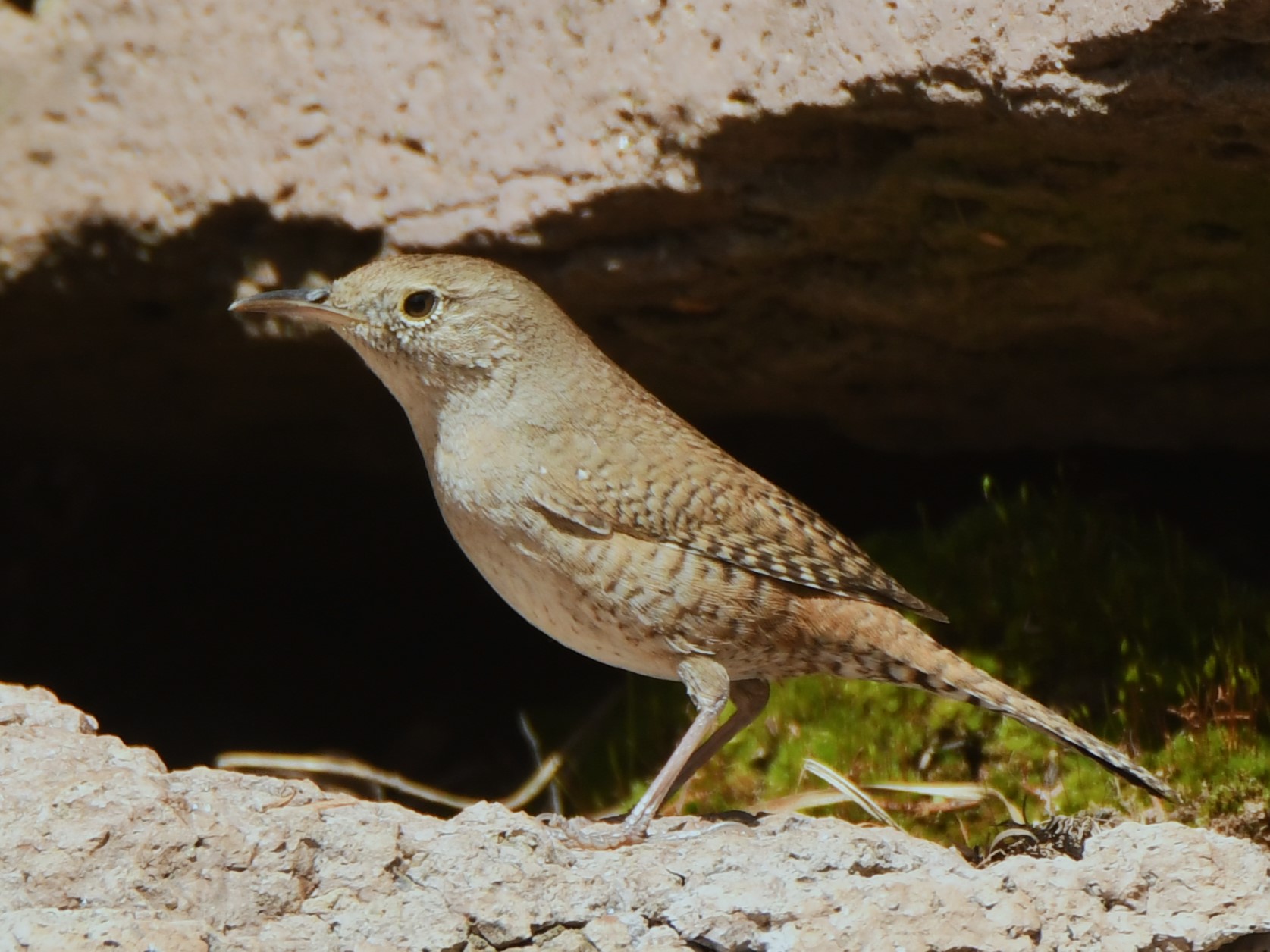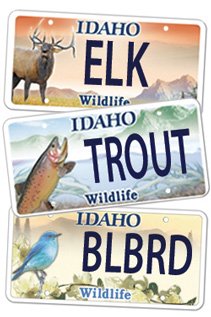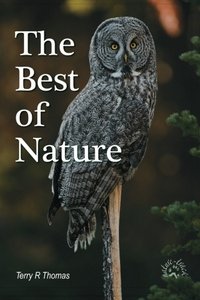Species Changes

©Terry R. Thomas/www.nature-track.com
If you are a birder and think you have crossed the Northern house wren off your list, think again. You now have six more species to pursue.
The Northern house wren that lives in my backyard and occasionally tries to plug up the ventilation pipe for my furnace system has some new cousins as of 2024 (there was already a southern species found from Mexico to Argentina). After years of research, it was determined that the Northern house wren is not one, but seven different species. One inhabits North America, the other six are on islands in the Caribbean.
The science that has allowed this incredible splitting of a species has only been around for about 40 years. It is called genomics. Genomics is the study of an organism’s entire genome or complete set of DNA as well as its three-dimensional structure. Is this different than genetics? No, in the sense that both deal with the DNA, yes in that genetics refers to the study of individual genes, a tiny fraction of what genomics uses. Genomics is vastly more inclusive, characterizing and quantifying ALL off the DNA of a species.
Genomics has created a revolution in how species are defined, directly challenging Ernst Mayr’s Biological Species Concept that stated that if two different animals could not breed and produce viable offspring, they then were different species. Genomics looks at relationships and similarities along the entire strand of DNA, all 1 billion or so units in a bird’s DNA, clearly at a level that our eyes and ears cannot detect. As one genome scientist said, “It’s not that the underlying biology has changed, it’s just that our window into it has widened so dramatically.”
Genome taxonomists argue that classification should be based on the evolutionary history of the animal—"a species is any unique, independently evolving lineage, regardless of its potential mating isolation (or not) from its current relatives. A bird’s taxonomic status, they contend, should be informed by its history.”
This new approach is turning the taxonomic world on its head. New species these days just aren’t species that are newly discovered and described physically, but rather species found to be different genetically when the entire genome is examined (a mapping process that a college student can accomplish in a couple of weeks). For example, in 2021, 94 new bird species were added from ‘splits’ of one species into two or more. At the same time, only eight ‘lumps’ of species occurred where species formerly thought to be different were shown to have the same evolutionary pathway.
In 2024, the big ‘lump’ that had the bird world abuzz was the combining of Common and Hoary redpolls, tiny songbirds that nest in the Arctic. They are now considered one species. However, besides the house wren, noteworthy splits included Cory’s shearwater, Audubon’s shearwater, brown booby, cattle egret, intermediate egret, lesser sand-plover, barn owl, and American pipit. The e-Bird website states: “Our 2024 update includes 3 newly-described species, 141 species gained because of splits, and 16 species lost through lumps, resulting in a net gain of 128 species and a new total of 11,145 species worldwide.”
It seems that even extinct species are not immune for this genomic re-classification. The passenger pigeon, extinct for over 100 years, was moved in the checklist sequence. It now follows Common Wood Pigeon.
All of this is a boon to those who write and publish field-guide books. It can also seriously mess with anyone trying to keep an accurate birding life list (this seems to be more of an issue with birds than with mammals, reptiles, amphibians, fish, plants, etc.). It is difficult to follow rules when then keep changing.
Most of all though, it is becoming clear that splitters are winning and lumpers are losing. I’m not sure what that means, but it is nice to be on the winning team for a change.
Help Idaho Wildlife
When we traveled across the state in October 2017, we visited most of the Idaho Department of Fish and Game wildlife management areas. Most of the vehicles we saw using the wildlife management areas did not have wildlife plates. Buying wildlife plates is a great way for non-hunters and hunters alike to support wildlife-based recreation like birding.
C'mon folks, let's help Idaho's wildlife by proudly buying and displaying a wildlife license plate on each of our vehicles!
See below for information on Idaho plates. Most states have wildlife plates so if you live outside Idaho, check with your state's wildlife department or vehicle licensing division for availability of state wildlife plates where you live.
And tell them that you heard about it from Nature-track.com!

Wildlife License Plates
Great news! as of 2024, there are three NEW designs for license plates. They still are bluebird, cutthroat trout and elk, but they are beautiful.
Idaho Wildlife license plates provide essential funding that benefits the great diversity of native plants and wildlife that are not hunted, fished or trapped—over 10,000 species or 98% of Idaho’s species diversity. Game species that share the same habitats (such as elk, deer, antelope, sage-grouse, salmon, trout) also benefit from these specialty plates.
No state tax dollars are provided for wildlife diversity, conservation education and recreation programs. Neither are any revenues from the sale of hunting or fishing licenses spent on nongame species. Instead, these species depend on direct donations, federal grants, fundraising initiatives—and the Idaho Wildlife license plates.
Both my vehicles have Bluebird Plates. I prefer the bluebird because the nongame program gets 70 percent of the money from bluebird plates, but only 60 percent of the money from elk and trout plates - 10 percent of the money from elk plates supports wildlife disease monitoring and testing programs (to benefit the livestock industry) and 10 percent from cutthroat plates supports non-motorized boat access.
Incidentally, in 2014, the Idaho Legislature denied the Department of Fish and Game the ability to add new plates or even to change the name of the elk and cutthroat plates (very specific) to wildlife and fish plates, a move that would have allowed for changing images occasionally and generating more revenue. It would seem that they believe that we Idahoans don't want a well funded wildlife program.
I think it is time we let the Legislature know that Idahoan support wildlife funding and that we would like to see these generic plates come to fruition.

"WOW. What a phenomenal piece you wrote. You are amazing." Jennifer Jackson
That is embarrassing, but actually a fairly typical response to my nature essays. Since The Best of Nature is created from the very best of 16 years of these nature essays published weekly in the Idaho Falls Post Register (online readership 70,000), it is a fine read. It covers a wide variety of topics including humorous glimpses of nature, philosophy, natural history, and conservation. Readers praise the style, breadth of subject matter and my ability to communicate complex and emotional topics in a relaxed and understandable manner.
Everyone can find something to love in this book. From teenagers to octogenarians, from the coffee shop to the school room, these nature essays are widely read and enjoyed.
Some of the essays here are my personal favorites, others seemed to strike a chord with readers. Most have an important message or lesson that will resonate with you. They are written with a goal to simultaneously entertain and educate about the wonderful workings of nature. Some will make you laugh out loud and others will bring a tear to the eye and warm your heart.
Readers Write:
"You hit a home run with your article on, Big Questions in Nature. It should be required reading for everyone who has lost touch with nature...great job!" Joe Chapman
"We enjoyed your column, Bloom Where Planted. Some of the best writing yet. The Post Register is fortunate to have your weekly columns." Lou Griffin.
To read more and to order a copy, click here or get the Kindle version
Copies are also available at:
Post Register
Island Park Builders Supply (upstairs)
Barnes and Noble in Idaho Falls
Harriman State Park, Island Park
Museum of Idaho
Valley Books, Jackson Wyoming
Avocet Corner Bookstore, Bear River National Wildlife Refuge, Brigham City, Utah
Craters of the Moon National Monument Bookstore, Arco, Idaho